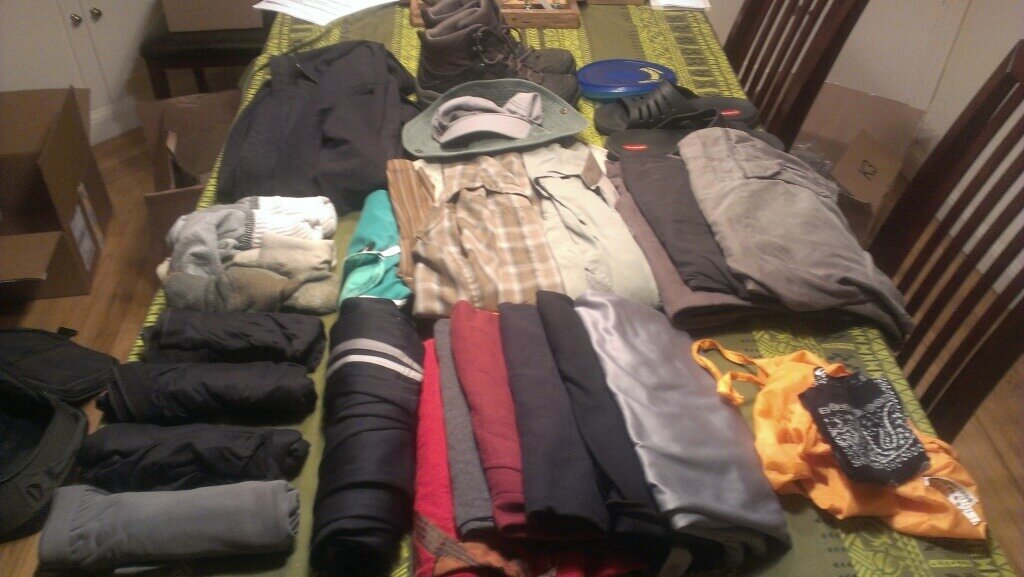
Packing & Preparing
Next Adventure provides every traveler with a unique and comprehensive bound pre-departure dossier with a detailed daily safari itinerary, lots of maps and background info on the camps and regions, local contact information, financial details, packing and reading lists, health matters, and other pre-trip details.
Packing Guidelines
Note: Please Read Carefully!
Type of Luggage and Weight Restrictions
While on safari comfortable, casual clothing is all you’ll need unless your itinerary includes elegant restaurants and hotels or travel on luxury trains. Laundry is widely available and most safari camps/ lodges and hotels provide toiletries. The less you take with you, the better! The maximum weight on your specific safari is noted at the top of your itinerary but please note the following guidelines. We strive to provide current and accurate information but cannot be held responsible for policy changes.
Weight restrictions on charter flights are enforced by the pilot. For the safety and comfort of all passengers, you are responsible for complying with the limits. Charter or commercial airlines may impose extra freight fees or require you to leave items behind or purchase an extra seat if you exceed their allowances.
Charter flights or light aircraf transfers: Each person is restricted to 15–20 kg (33–44 lbs.) total baggage, as outlined below and at the top of your custom safari itinerary.
Intra-Africa commercial flights allow 44 lbs. checked baggage plus carry-on in most places.
In some locations, excess baggage may be stored at the airports or hotels for retrieval on your return (only if your itinerary circles back to the same place!) You will need a small, light dufel for this purpose.
Luggage Guidelines
Most travelers bring two bags:
One "checked bag" like a sturdy dufel bag or sof-sided suitcase per person. This is for the bulk of your belongings, and, please note, the small aircraf used for charter flights or air transfers between safari areas cannot accommodate hard-sided suitcases.
We recommend a simple dufel bag as it is lighter, allowing more weight for clothes, etc. There should be porters or assistance with luggage throughout your trip, so wheels aren't generally necessary, and laundry service is available at all the camps, so we recommend packing light.
We find that a 40L bag has more than enough capacity, and the overall dimensions are generally just shy of 24"L x 12"W x 10"H.
One "carry-on" like a camera bag or backpack per person. This is for your personal items like camera and binoculars, a water bottle, sunscreen and insect repellent, a hat (scarf and gloves), a small flashlight, etc... It is important that you check with your air carrier and/or the TSA about current restrictions. A belt pack is also a good option for valuables and travel documents.
Luggage on Scheduled Commercial Flights
Commercial carriers generally impose a weight restriction of 44 lbs. per economy class traveler in one suitcase/bag as well as one item of hand baggage (the total dimensions – height, width and length may not exceed 115cm or 45 inches). Please check with your international carrier to verify this. Please note that if combining scheduled airline flights and charter air transfers, then the most stringent (lightest and smallest) specified luggage restriction for charter air transfers will apply.
Luggage on Light Aircraft Transfers or Charter Flights
Strict weight restrictions apply on safaris which include light aircraft transfers because:
Light aircraft have a designated maximum passenger and luggage weight allowance.
Many airfields are over 3,000 feet and in the tropics, so the permissible carrying capacity is reduced.
Smaller aircraft have physical space restrictions.
Therefore, please note the following:
Passengers weighing more than 220 lbs or two guests traveling together whose combined weight is 390 lbs or more, must advise us at the time of booking. An extra seat may have to be included in your safari cost for safety purposes.
Shared Air Transfers
Generally, most travelers are booked onto scheduled light aircraft transfers which are shared with other guests. As these air transfers are shared, they may include short stops at airstrips for the other guests en route to your destination.
When we set up a safari itinerary using shared air transfers, we book the aircraft and pilot through licensed charter companies. This portion of your trip is therefore sub-chartered. All the flight times between lodges are arranged a few days before the flights take place so that there are not endless schedule changes.
At certain times of the year it may be necessary (for safety reasons) to transfer you during the cooler times of the day, in early morning or late afternoon only. The lodge or camp manager where you are staying will be advised of your departure time the day before travel and will ensure that you are at the airstrip on time.
Lost Baggage
To minimize inconvenience due to lost luggage, please pack a small bag with your essentials including any life sustaining medication, which can be carried with you as hand luggage, and pack a second bag containing non- essentials that can be loaded in the aircraft hold. If the second bag does not arrive, you will still have your essential items on hand while efforts are made to recover your baggage.
Luggage Safety and Security
There has been a general increase in the incident of theft of personal belongings from checked luggage. Although authorities are addressing this, it is of utmost importance that you do not put anything of value (personal or financial value) in your checked baggage as luggage can be tampered with and valuables removed. This includes, but is not limited to jewelry, cameras, video equipment, reading /sunglasses, laptops or other computer/electronic equipment, medication (especially critical medication) etc which can all be carried in a carry-on bag that stays with you at all times. We also strongly recommend that you lock your checked luggage with TSA-approved locks to deter opportunistic theft.






